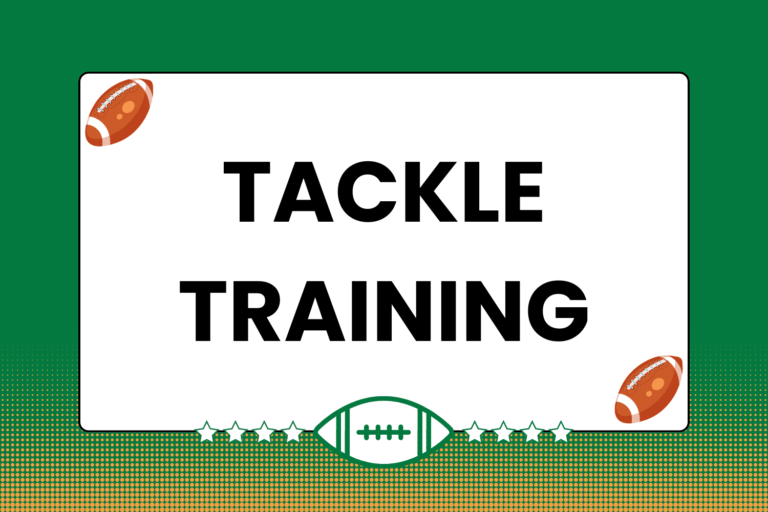It would be easy to think that the rugby we know today was derived from some ancient Roman tradition where two teams of gladiators played a free-for-all version of handball using the head of a recently deceased competitor and members of the winning team were awarded a month-long party and hiatus from having to fight for their lives. In actuality, there’s a little bit of accuracy in there. While the roots of rugby don’t spring from Rome, there was definitely a free-for-all element in earliest versions of the game.
What follows is a brief overview of the key events and people involved in the formation of the game now known as rugby. Please keep in mind: If you read this and start to feel an overwhelming sense of transcendent bliss and spiritual growth, don’t be alarmed. You’re reading about the history of rugby, after all, and such feelings and emotions are perfectly natural.
Origins
Much like with most events that occur in the world, rugby’s roots can be traced back to the mythical era of ‘A Long Time Ago.’ Games involving balls have existed for many years. So for the sake of specificity, it works to use the 10th century as a starting point. Rugby, football (soccer) and American football are all common descendents of a group of crude and extremely violent games that differ slightly in name and rules (depending on the location they were played). Essentially, though, they were built around the principle of trying to get a ball in the other team’s goal.
Common Ties between the Different 10th Century Games
Generally games were played between neighboring towns and villages; there was no limit to the number of people who could ‘play.’ Brutal acts of violence were the norm rather than the exception, so games resembled a massive street fight that occasionally involved moving some sort of ball-like object.
Eventually these skirmishes/games gained enough notoriety to come to the attention of various authority figures. By the 12th century they started decreeing (or however rules were imposed back then) that such games were forbidden for being immoral and disorderly acts. These games were also said to have been distractions for people doing whatever they were supposed to be doing (not to mention the fact that more than a few people died while playing – often from stab wounds). Playing these games became a punishable offense, usually to the point of imprisonment.
These “games” were called by different names:
- The Celts played a game called Caid; the Welsh played Cnapan; the Danes (Vikings) played Knattleikr; the French played La Soule. Despite the different names, they all resembled the ‘town vs. town’ street fights described above.
- The Romans even had a game called Harpastum, played in the 6th century, which also likely has ties to the modern game of rugby. Harpastum was played by two teams of 27 players in a giant sand pit, with goals running the width of the pit at each end. Goals were scored by throwing or kicking the ball through the goal area, while punching, kicking, tackling, hip-tossing, head-locking, clothes-lining, tripping, drop-kicking, etc. were all effective and approved means of playing defense.
All these different games notwithstanding, the main idea was the same: Beat the living daylights out of the other team and try to get the ball in its goal.
Rugby vs. Football: How it All Began
Focusing the scope of this historical foray into the roots of rugby takes us to England in the late 18th century and early 19th century. It’s worth noting that playing a more civilized version of these kinds of games – referred to as football – was common practice at many boys’ schools. With this in mind, two important things need to be mentioned:
- There did not exist, among all the schools that played some version of football, a commonly accepted list of rules, which meant the boys at each school made up their own rules.
- A few important things went down at the Rugby School in Warwickshire, England.
Enter a student at the Rugby School named William Webb Ellis. According to local (and unsubstantiated) history, Ellis is credited as being the catalyst for the transition from football to rugby. The story goes that in 1823 Webb Ellis, during a game of football, decided to pick up the ball and run with it in attempt to score against the other team. It’s understandable that this may not come across as being all that noteworthy, but back then it was, as running with the ball was definitely frowned upon, if not expressly forbidden, in all the different forms of football being played at the time.
In any case, the legend was born and grew to massive proportions. It was told throughout the lands over many years, to the point that every four years the Rugby World Cup, the champion is awarded the Webb Ellis Trophy. Another crucial element is that Ellis’ story, combined with the continued academic success and notoriety of the Rugby School over the years, led to the variation of football played at the Rugby School aptly titled ‘Rugby Football,’ which was soon adopted at other boys schools throughout England.
Regardless of the shock Webb Ellis caused by running with the ball (and thanks to the popularity of the Rugby School version of football), by the 1840s it was common practice to run with the ball. While some schools avoided making carrying the ball a central part of their game, rugby football’s following continued to grow. Men who had enjoyed playing the game as boys at school formed football clubs, both to continue playing the game they enjoyed so much as children and to introduce the game to people who hadn’t heard of it.
Rugby & Football Officially Split
The game continued to grow in popularity. However, the fact that there still were different sets of rules continued to be an issue – this time between the different men’s clubs. Eventually, a meeting took place at a bar in London. The goal of the meeting was to both create a charter under which all the different teams would be unified as football clubs and create a set of rules of which every club would abide. After several meetings, the Football Association was officially formed and, among other things, a set of rules for all football clubs was agreed upon. These rules were known as the Cambridge Rules (as Cambridge University was home to one of the first football clubs). It was in the formation of these rules that the modern game of football (soccer) was created.
However, not every club in attendance agreed to the Cambridge rules, specifically those that sought to ban running with the ball and ‘hacking’ or shin-kicking another player. So another set of meetings took place in 1870 and it was attended by those clubs which were unsatisfied with the Cambridge rules. By June of 1871, a set of laws (as the rules had been created by three lawyers, all of whom attended Rugby School) was approved by all 22 clubs in attendance. The Rugby Football Union (or RFU), and subsequently the game of rugby, was born.
Rugby Grows Up & Suffers Growing Pains
The game continued to thrive. By 1880 there were rugby unions established in Scotland, Ireland and Wales. At the turn of the century there were rugby clubs in places as far away as Argentina. Once again, however, a dispute over the rules of the game became the catalyst for yet another split. In 1884, in a match between England and Scotland, the issue of allowing play to continue after a penalty was committed (or advantage play) came under fire:
- The English asserted that because they had invented the modern rules, their interpretation of those rules was correct.
- Naturally, the Scots were less than pleased, and in an attempt to obtain more representation in matters regarding policy and procedure, they formed the International Rugby Football Board (or IRFB), along with Ireland and Wales.
The English, desiring to continue as the final authority in such manners – justified by, in their opinion, the fact that they had the greatest number of clubs – refused to join until 1890, probably because they got bored of just playing the same club teams over and over again. The IRFB eventually became the IRB, or International Rugby Board.
The IRFB’s policy issues did not come to an end. During these initial years, the IRFB and Rugby Union maintained a strict set of rules that forbade paying players for their participation in rugby matches. This meant that players could either skip matches to work and get kicked off the team, or skip work to play in matches and not get paid for the time they missed work.
Rugby continued to grow in numbers and popularity, but the stigma over the RFU’s refusal to pay its players continued to mar its collective reputation. This was largely because it was widely believed that teams in the Union collected unofficial payments in the form of cars, houses, etc. while still claiming amateur (or unpaid) status. The consensus amongst rugby players and fans was that the clubs, leagues and owners were enjoying rather sizable profits, and paying players would put an unattractive dent in those figures. In 1995, however, the IRB and RFU finally decided to make rugby an “open” game, effectively eliminating all the restrictions associated with paying players.
Rugby Today
Many parts of the game played in the 1800s still exist today, though it’s gone through several rounds of overhauls, especially regarding the scoring system. Today, teams and fans around the world enjoy rugby. The various leagues recognized by the IRB and RFU are excellent sources for highly-competitive matches. And even while it had to overcome a sizable dose of discriminatory practices and biased views, women’s rugby also enjoys a healthy following. In 1998, a women’s World Cup tournament was put into place and fully sanctioned by the IRB. Rugby was considered an Olympic sport in the early 20th century.
These days, the Rugby World Cup remains the tournament that every team in the Union wants to win. Over 100 countries have, or belong to, a rugby union, and in 2007 over four billion people watched the Rugby World Cup. Rugby has come a long way from being not much more than gigantic town vs. town brawls, although a match between New Zealand and Australia would look pretty close.





